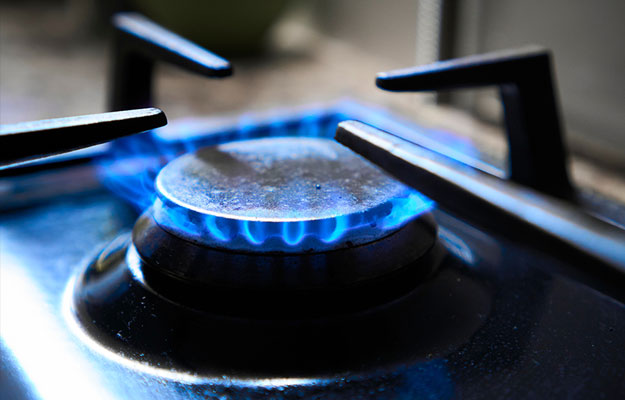
Methane is a simple alkane compound with the chemical formula CH4.
It’s odorless, highly flammable and is a potent greenhouse flow gas (emitted then destroyed) with a relatively short climate pollutant life of up to 12 years compared to carbon dioxide (CO2), a stockpiling gas that has 1,000 years’ life. However, it traps 84 times more heat per mass unit than CO2. Methane is also the primary component of natural gas, used to heat homes and businesses. In air, 5% by volume (50,000ppm) represents 100% of the Lower Explosive Limit (LEL) with 15-17% by volume being the Upper Explosive Limit (UEL).

Sources
Sources of methane in the atmosphere include industrial fossil fuel extraction and enteric fermentation by ruminant animals via the biogenic carbon cycle. Plants absorb CO2 during the process of photosynthesis, reducing it to glucose and releasing oxygen. The carbon is converted into carbohydrates consumed by cattle. The digestive process contributes to the most emissions. 90-95% of these emissions released by cows is from their mouths, while 5-10% is released in the form of flatulence and manure. In California USA, dairy digesters and manure management changes are actively being implemented to reduce overall methane emissions from cattle.
In 2020, NASA modeled the sources and transportation of methane across the globe. The process demonstrated that sources vary by location and season. The Amazon River basin and adjacent wetlands in South America flood seasonally, depriving the environment of oxygen and contributing a significant amount of methane. In India and SE Asia, rice cultivation and livestock add to this in these regions. In the Arctic and Siberian Tundra, natural wetlands and thawing permafrost account for more than 70% of the regions’ emissions. China’s economic expansion is driving a high demand for coal and oil fossil fuels. Europe is the only region to show a decrease in emissions over the last 20 years. Methane concentrations have more than doubled globally over the last 200 years, largely due to human activities and influences.
Climate Change
Sunlight consists of ultraviolet (UV), infrared (IR) and visible light. The thin ozone layer in the earth’s atmosphere blocks most of the harmful UV rays while IR and visible light rays are absorbed or partially reflected back into the atmosphere. Greenhouse gases such as carbon dioxide and methane trap the shortwave heat radiation, re-emitting it to the earth’s surface. Radiative forcing is a commonly used metric for assessing climate change mechanisms but is not uniform across the globe. It largely depends upon bright surface features and the presence of clouds. The effect is pronounced in regions such as the Saharan Desert or Arabian Peninsula. These locations receive the most sunlight due to their proximity to the equator and experience exceptionally low relative humidity, which helps to further enhance the detrimental effects of methane. In the deep sea, where there is high pressure and cold temperature, methane molecules are trapped by water molecules creating a chemical cage around them called a clathrate. At higher temperatures these clathrates become unstable and break apart, separating back into water and methane gas bubbles, free to enter the atmosphere. Under the Siberian Tundra, there are large deposits of organic material containing methane. As temperatures rise, melting the permafrost, carbon dioxide and methane are released. The warming cycle continuously releases these greenhouse gases.
Fugitive emissions
The use of the term ‘fugitive’ arises as these unwanted emissions are not accounted for or calculated during the design of equipment and associated components. Fugitive emissions are the unintentional and undesirable emission, leakage or discharge of gases and vapors from pressure-containing equipment or facilities. This also includes releases from components within an industrial plant such as valves, pipes flanges, pumps, storage tanks and compressors. Farming is also a primary source that is unquantified concerning its overall contribution to levels. These emissions are unanticipated and are not detected by typical monitoring and control devices. Specialist equipment is required and deployed strategically to monitor such emissions to give average site readings. Particularly methane, the main constituent of natural gas, escapes during the drilling, extraction, and transportation process. Because gas production has increased sharply in recent years following the discovery of large quantities locked inside shale rock, the focus is now on measuring and limiting these emissions.
CNIguard’s GasMarshal natural gas detector senses methane at low levels, providing early warning of leaks before the Lower Explosive Limit (LEL) is reached or can be used to monitor other unintended emissions.
Find out more about CNIguard’s GasMarshal product here.
USA Headquarters
8601 Dunwoody Place
Suite 303
Sandy Springs
GA 30350
United States
T: +1-212-764-0100
Edinburgh Innovation Center
14 S Charlotte Street
Edinburgh EH2 4AX
United Kingdom





 Jason Wilson
Jason Wilson